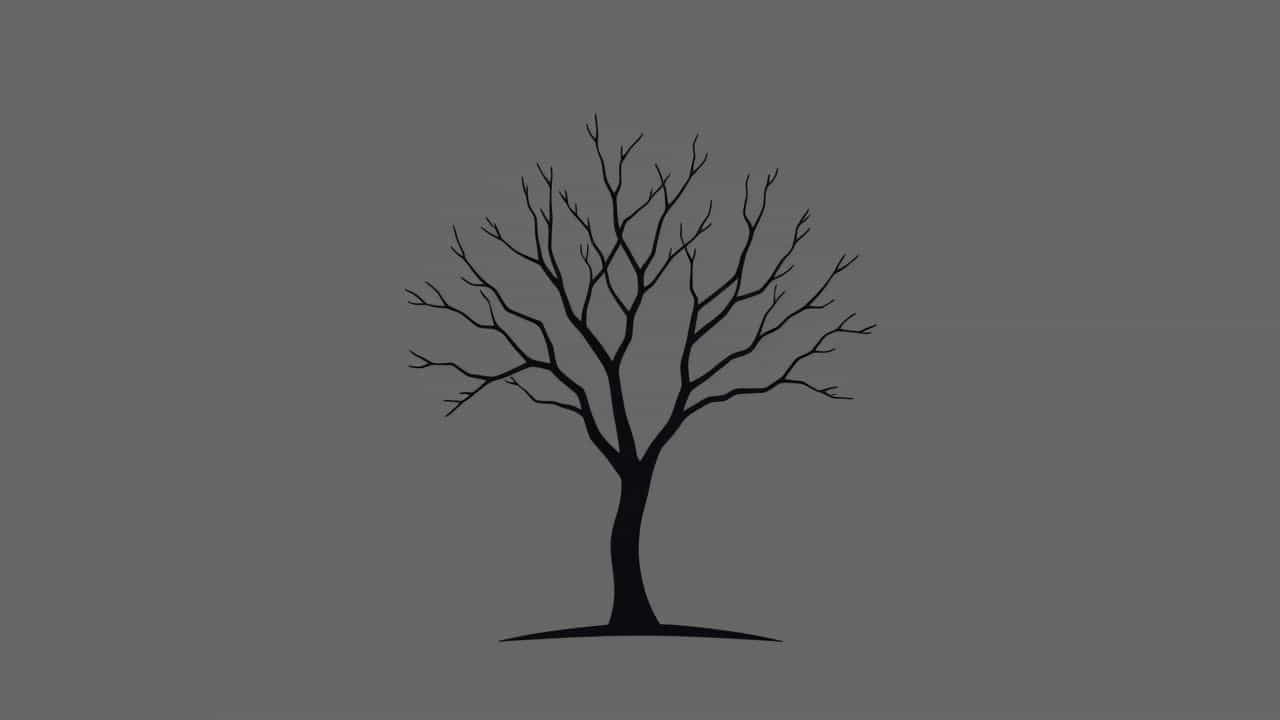A leafless tree is a tree that has lost its leaves due to seasonal changes, environmental stress, or disease. While leafless trees are most commonly seen during autumn and winter, some trees remain without leaves due to drought, pests, or poor soil conditions.
Beyond their biological state, leafless trees carry deep symbolic meanings in art, literature, and culture. They can represent death, resilience, change, or even hope.
In this topic, we’ll explore why trees lose their leaves, the different meanings behind leafless trees, and what they tell us about the environment.
Why Do Trees Lose Their Leaves?
There are several reasons why a tree might become leafless, ranging from natural cycles to environmental stressors.
1. Seasonal Changes (Deciduous Trees in Autumn and Winter)
Many trees, especially in temperate climates, shed their leaves as part of their natural life cycle. These trees, called deciduous trees, lose their leaves in autumn and remain bare throughout winter. This process is called abscission.
-
Why do trees shed leaves in winter?
-
To conserve water and energy during the cold months.
-
To reduce the risk of damage from heavy snow and ice.
-
To prepare for new growth in spring.
-
Common deciduous trees that shed leaves include:
-
Oak
-
Maple
-
Birch
-
Cherry
2. Drought and Water Stress
Trees need water to survive. When faced with long periods of drought, some trees shed their leaves as a survival strategy. By dropping leaves, they reduce water loss and increase their chances of survival.
3. Disease and Pests
Certain diseases can cause trees to lose their leaves prematurely. Fungal infections, bacterial diseases, and insect infestations weaken the tree, leading to leaf drop.
Common tree diseases that cause leaf loss:
-
Dutch Elm Disease
-
Oak Wilt
-
Anthracnose
4. Poor Soil Conditions
If a tree is growing in nutrient-deficient soil, it may struggle to maintain healthy foliage. Lack of nitrogen, phosphorus, or potassium can lead to early leaf drop or stunted growth.
5. Human Activities (Deforestation and Pollution)
Pollution, urbanization, and deforestation impact tree health. Air pollution, soil compaction, and excessive pruning can cause trees to become weak and shed their leaves.
Symbolism of a Leafless Tree
Throughout history, leafless trees have been used as powerful symbols in literature, religion, and art.
1. Death and Endings
A tree without leaves often represents death, endings, or loss. Many cultures associate leafless trees with the cycle of life and the passage of time.
2. Strength and Resilience
While leafless trees may look lifeless, they are often still alive. They endure harsh conditions and continue to stand strong, making them a symbol of resilience and perseverance.
3. Change and Transformation
Trees that shed their leaves in autumn and grow new ones in spring symbolize change, renewal, and new beginnings. This is often used to represent personal growth, transformation, and hope.
4. Loneliness and Isolation
A single bare tree standing in an empty field is a common artistic representation of loneliness, emptiness, or sadness.
Examples of Leafless Trees in Nature
1. Dead Trees
Some trees lose their leaves permanently due to age or disease. Dead trees no longer grow, but they provide shelter for birds, insects, and fungi in forests.
2. Winter Trees
Deciduous trees shed their leaves in autumn but remain alive and dormant throughout winter. Once spring arrives, they grow new, fresh leaves.
3. Desert Trees
Some trees in dry climates adapt to extreme heat by shedding leaves during hot seasons to reduce water loss. Examples include:
-
Palo Verde (Arizona and Mexico)
-
Baobab Tree (Africa)
How to Care for a Leafless Tree
If your tree is losing leaves outside of the usual season, it may need attention. Here’s how to help:
1. Check for Disease or Pests
-
Look for unusual spots, mold, or insect damage on the trunk and branches.
-
Apply organic pesticides if necessary.
2. Water Regularly
- If the tree is losing leaves due to drought, provide deep watering once or twice a week.
3. Improve Soil Health
- Add organic compost or fertilizers to improve nutrients.
4. Prune Dead Branches
- Remove damaged or diseased branches to encourage healthy growth.
5. Protect from Extreme Weather
- In cold areas, wrap young trees with burlap to prevent winter damage.
A leafless tree can be a natural occurrence due to seasonal changes, a sign of environmental stress, or a powerful symbol of transformation and resilience. Whether seen in a winter forest, a dry desert, or a painting, these trees remind us of the cycles of life, change, and endurance.
If you notice a tree losing leaves unexpectedly, understanding the causes and solutions can help ensure its survival. With proper care and attention, most trees can regrow their leaves and thrive again.
